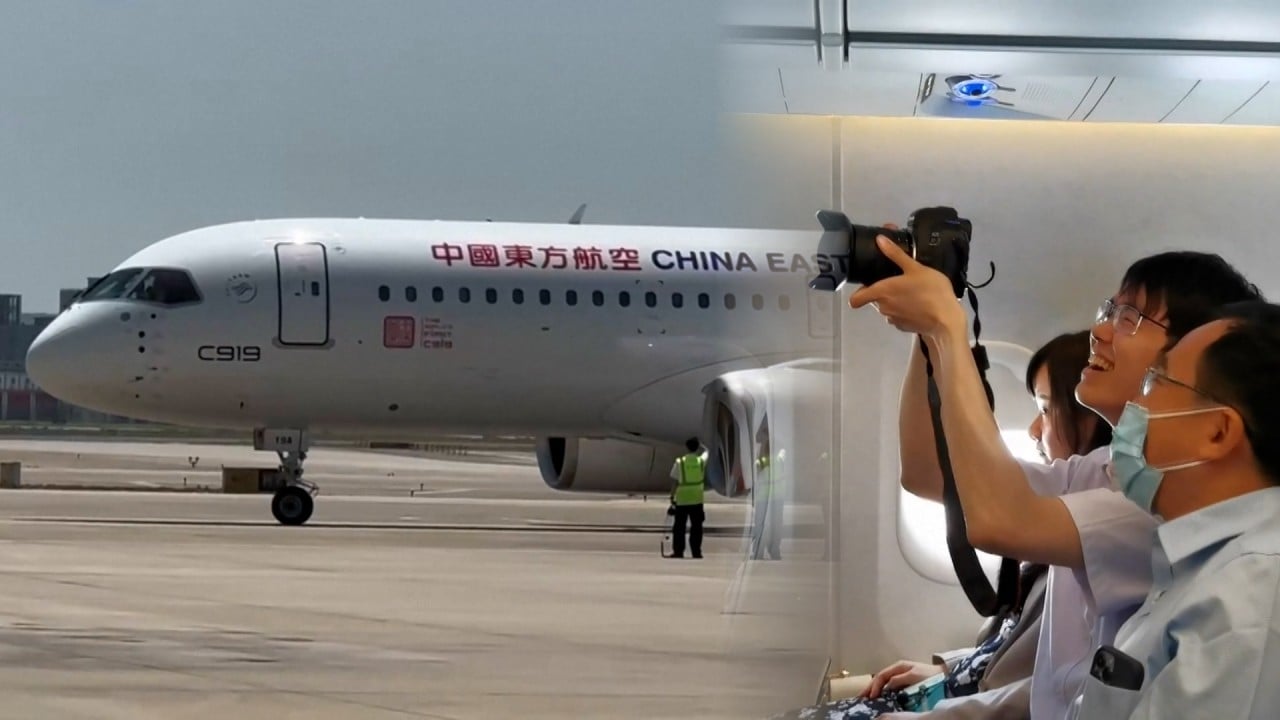Here are China’s 4 commercial jets, from the ARJ21 and C919 to the jumbo C929 and C939

Comac reported a combined 200,000 flight hours for this aircraft type as of March last year, according to the CAPA Centre for Aviation market research organisation.
The ARJ21 compares in size to the defunct Boeing 717, the retired McDonnell Douglas MD 80-90 line of planes, and the Embraer E190-E2 model.
The still-flying Embraer planes can take 106 passengers and fly as far as 5,278km per trip.

2. C919 narrowbody aircraft
Many key parts of the C919 are said to be made by American or European suppliers.
Its engine, for example, is produced by CFM International, a joint venture between GE Aerospace of the US and France’s Safran Aircraft Engines.
The C919 compares most closely to the Airbus 320 and Boeing 737 lines of aircraft.
Planes in the A320 series can seat 140 to 180 passengers and can fly 6,300km in one journey. Boeing 737s hold 138 to 230 seats and fly 5,954 to 7,084km.
3. C929 widebody aircraft
Comac says it is working on a twin-aisle plane, the C929, for as many as 290 passengers. It would be able to fly as far as 12,000km in one trip. The distance from Beijing to New York is about 11,000km.
Airlines could take deliveries of this model as soon as 2027.
The aircraft firm said last month that it was scouting for experts across industries to build the C2929 with made-in-China parts and technology.
It is not yet clear how Comac will source other parts for the aircraft, said Eric Lin, head of Greater China research with UBS in Hong Kong.
The C929 would compare closest to the Airbus A350 and Boeing 787 aircraft families in terms of maximum flight distances, Lin said. A350 models can take 300 to 350 passengers on flights up to 15,000km. Boeing 787 models can fly 13,600 to 14,600km and carry 242 to 290 passengers.

4. C939 jumbo aircraft
China has worked out preliminary designs for this giant plane, though it could take years before Comac develops a testable prototype, a source familiar with the aircraft maker’s work told the Post.
The C939 will be a widebody, twinjet airliner similar to the Boeing 777, said Mayur Patel, the Asia head for industry data platform OAG Aviation. It would have the capacity for 400 seats and a range of 13,000km, he said.
Boeing 777 can seat 301 to 368 passengers and fly 9,700 to 15,840km.
Deliveries of the C939 will not start for at least 10 years, and will occur only if Comac has “adequate resources” with mostly imported components, said Richard Aboulafia, managing director of the US-based aerospace consultancy AeroDynamic Advisory.
Source link




